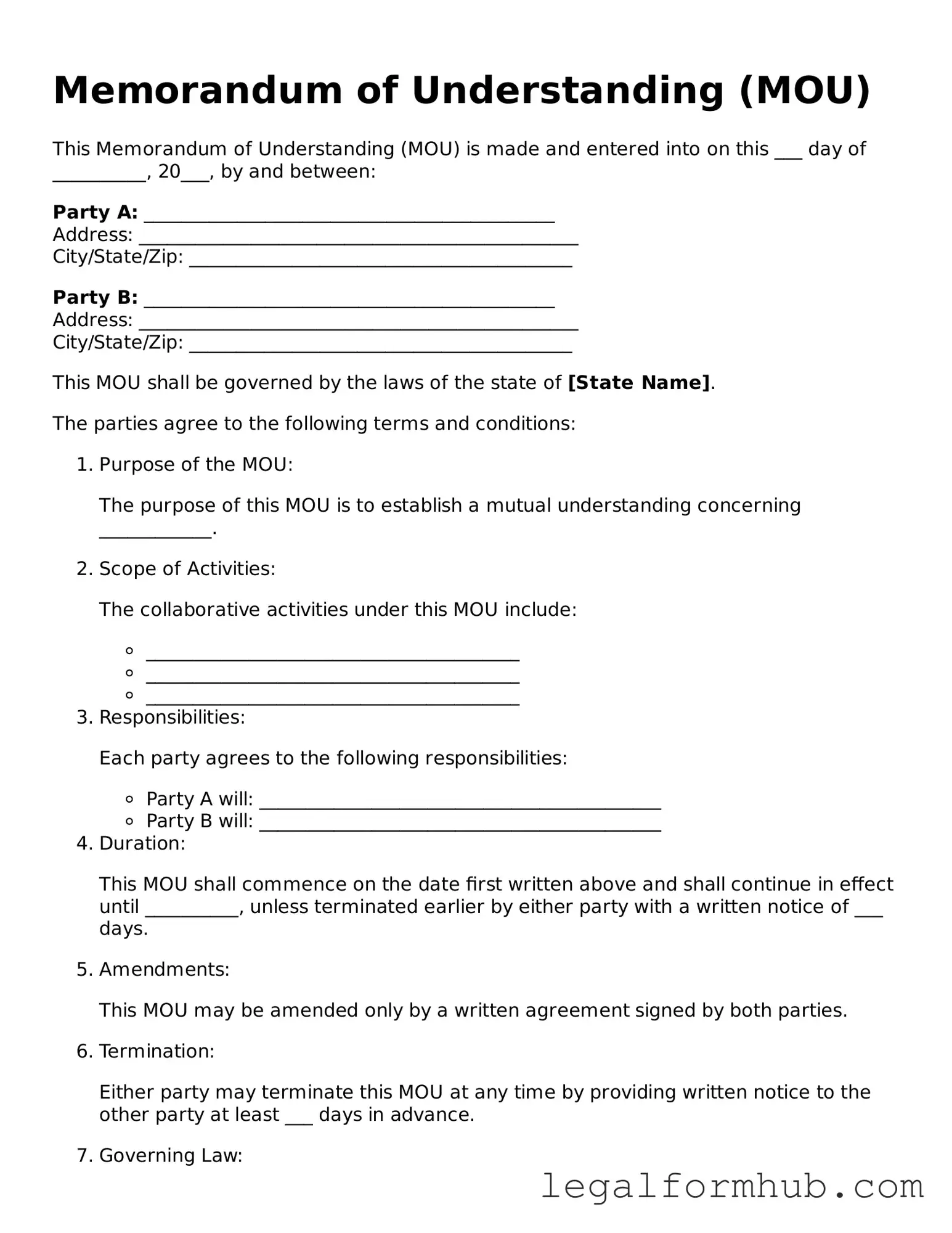A Letter of Intent (LOI) is similar to a Memorandum of Understanding (MOU) in that both documents outline the intentions of parties involved in a potential agreement. An LOI typically serves as a preliminary agreement, indicating that the parties are interested in moving forward with negotiations. While an MOU may be less formal, both documents express a mutual understanding and set the stage for further discussions.
A Partnership Agreement is another document that shares similarities with an MOU. This type of agreement formalizes the terms of a partnership between two or more parties. Like an MOU, it defines roles, responsibilities, and expectations. However, a Partnership Agreement is legally binding, whereas an MOU may not always carry the same legal weight.
A Non-Disclosure Agreement (NDA) also bears resemblance to an MOU, particularly in the context of confidentiality. Both documents can establish trust between parties by outlining the terms of information sharing. An NDA specifically focuses on protecting sensitive information, while an MOU may include broader terms of collaboration.
An Interagency Agreement (IA) is often used between government agencies and is similar to an MOU in its purpose of outlining cooperative efforts. Both documents aim to clarify roles and responsibilities, ensuring that all parties understand their commitments. IAs, however, often contain more detailed provisions regarding funding and resource allocation.
A Service Level Agreement (SLA) is another document that can be compared to an MOU. SLAs define the expected level of service between a service provider and a client. While an MOU may cover a wide range of topics, an SLA is focused on specific performance metrics and responsibilities, ensuring accountability.
A Collaboration Agreement is akin to an MOU in that it details the terms of a joint effort between parties. Both documents aim to foster cooperation and clarify the goals of the collaboration. However, a Collaboration Agreement may include more specific terms regarding contributions, timelines, and outcomes.
A Terms of Service (ToS) agreement is similar to an MOU in that it outlines the expectations and responsibilities of users and service providers. While an MOU may be more informal, a ToS is typically a legally binding contract that governs the use of a service. Both documents help establish clear guidelines for interaction.
A Memorandum of Agreement (MOA) is closely related to an MOU, with both documents outlining the terms of a relationship between parties. The key difference lies in the level of detail and formality. An MOA often includes more specific commitments and can be legally binding, while an MOU is generally less formal and may serve as a starting point for negotiations.
In exploring various agreements similar to a Memorandum of Understanding, it is also essential to consider formal documents like a General Bill of Sale, which serves to outline the transfer of ownership of personal property. For more information on creating this document, visit PDF Documents Hub, where you can find resources to assist you in drafting a clear and effective bill of sale that safeguards both parties' interests.
A Letter of Understanding (LOU) is another document that shares characteristics with an MOU. Both serve to clarify the intentions and expectations of the parties involved. An LOU may be used in situations where a formal agreement is not yet in place but where a mutual understanding is necessary to proceed with discussions.
Finally, a Framework Agreement is similar to an MOU in that it sets out the general principles and guidelines for future agreements between parties. Both documents aim to establish a foundation for cooperation. However, a Framework Agreement often covers broader issues and may lead to more detailed contracts in the future.
